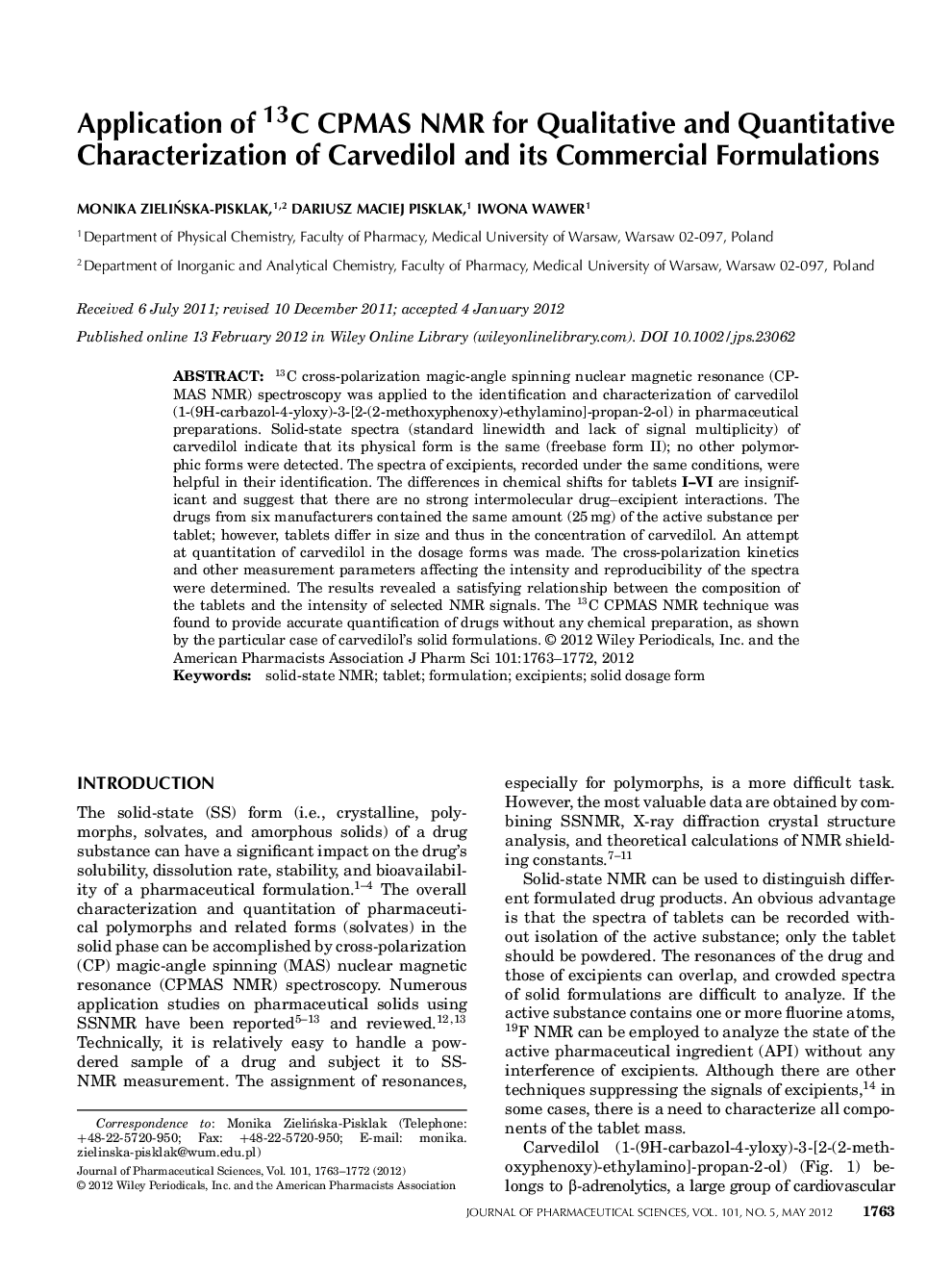| Article ID | Journal | Published Year | Pages | File Type |
|---|---|---|---|---|
| 2485146 | Journal of Pharmaceutical Sciences | 2012 | 10 Pages |
Abstract
13C cross-polarization magic-angle spinning nuclear magnetic resonance (CPMAS NMR) spectroscopy was applied to the identification and characterization of carvedilol (1-(9H-carbazol-4-yloxy)-3-[2-(2-methoxyphenoxy)-ethylamino]-propan-2-ol) in pharmaceutical preparations. Solid-state spectra (standard linewidth and lack of signal multiplicity) of carvedilol indicate that its physical form is the same (freebase form II); no other polymorphic forms were detected. The spectra of excipients, recorded under the same conditions, were helpful in their identification. The differences in chemical shifts for tablets I-VI are insignificant and suggest that there are no strong intermolecular drug-excipient interactions. The drugs from six manufacturers contained the same amount (25Â mg) of the active substance per tablet; however, tablets differ in size and thus in the concentration of carvedilol. An attempt at quantitation of carvedilol in the dosage forms was made. The cross-polarization kinetics and other measurement parameters affecting the intensity and reproducibility of the spectra were determined. The results revealed a satisfying relationship between the composition of the tablets and the intensity of selected NMR signals. The 13C CPMAS NMR technique was found to provide accurate quantification of drugs without any chemical preparation, as shown by the particular case of carvedilol's solid formulations.
Related Topics
Health Sciences
Pharmacology, Toxicology and Pharmaceutical Science
Drug Discovery
Authors
Monika ZieliÅska-pisklak, Dariusz Maciej Pisklak, Iwona Wawer,
